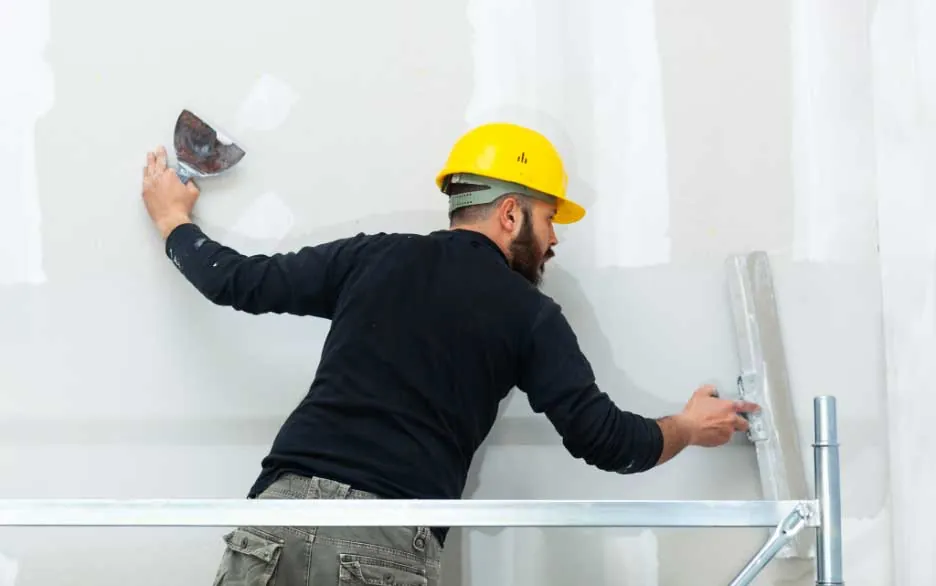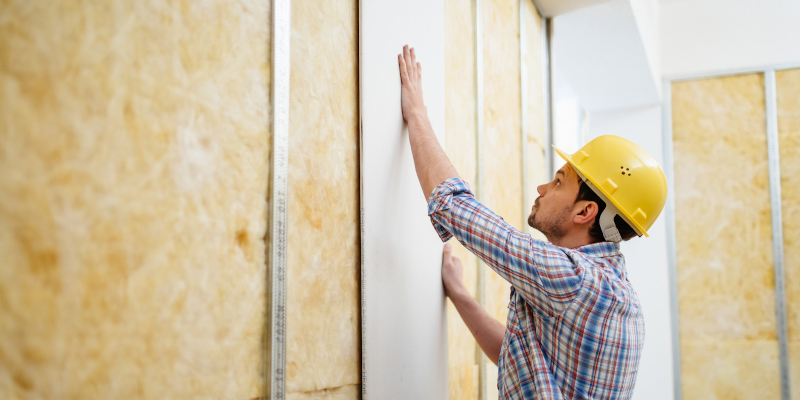Top-Rated Drywall Fort Worth Services for Residential Projects
Top-Rated Drywall Fort Worth Services for Residential Projects
Blog Article
Drywall Installation Facilitated: Tips for Perfect Outcomes
Drywall installation is commonly perceived as a complicated task, yet with the ideal method and expertise, it can become a workable endeavor. Grasping strategies for cutting, hanging, and completing drywall can significantly affect the end result.
Choosing the Right Materials
Picking the appropriate materials for drywall installment is essential to accomplishing a sturdy and aesthetically pleasing surface. drywall installation. The key component, drywall sheets, usually come in numerous thicknesses, with 1/2-inch sheets being conventional for interior wall surfaces. For areas needing added dampness resistance, such as restrooms or cooking areas, think about utilizing environment-friendly board or concrete board, which are specially developed to endure moisture

Additionally, selecting the right bolts-- either nails or screws-- is crucial for safeguarding the drywall to the framework. Drywall screws are usually preferred for their holding power and minimized danger of popping. Lastly, consider the complements such as guide and paint, which not only enhance the look yet likewise safeguard the drywall from moisture and wear.
Preparing the Setup Area
Prior to beginning the drywall installment process, it is necessary to prepare the installation location thoroughly. A clean work space reduces the risk of damage to existing things and allows for efficient activity during installment.
Next, check the wall surfaces and ceiling for any type of blemishes, such as cracks, holes, or mold. Address these concerns beforehand; patch any kind of problems and allow adequate time for fixings to dry. Furthermore, make certain that electrical outlets, switches, and pipes are effectively positioned and represented, as this will impact drywall placement.
Think about the environmental conditions also. A steady temperature and moisture degree are essential for optimum attachment and efficiency of the drywall products. If needed, utilize a dehumidifier or heating unit to create suitable conditions.
Cutting and Hanging Drywall
The key to efficient drywall installment lies in the precise cutting and dangling of the panels. Utilize a straight edge and an energy knife to rack up the drywall along your dimensions, then break it along the racked up line for a clean break.

Always function from the top down and left to right, making sure that you keep a staggered pattern to improve security. Properly hanging the drywall establishes the structure for a smooth finish, eventually leading to exceptional cause your drywall project.
Taping and Mudding Methods
While correct cutting and hanging of drywall sets the phase, the following critical step includes mastering taping and mudding techniques to guarantee a smooth surface. Insulation is important for strengthening joints and protecting against cracks; it includes installing tape into the used joint substance (mud) Beginning with a high quality fiberglass or paper tape, applying the tape about his over the joint and pressing it into the wet mud utilizing a taping knife, making sure no air bubbles continue to be.
As soon as the tape remains in area, use a slim layer of joint substance over the tape, feathering the sides to create a smooth transition to the drywall surface. Enable this layer to dry totally before sanding it lightly to eliminate flaws. Repeat this process, applying added layers of mud as necessary-- generally a couple of coats-- while gradually widening the application location with each layer to accomplish a seamless look.
After the final coat dries out, sand the surface area with a fine-grit sandpaper till smooth. drywall contractor. Remember to wear a mask during sanding to avoid breathing in dirt bits. Grasping these taping and mudding techniques is crucial for achieving a professional-quality coating in your drywall setup
Completing Touches for Perfection
Achieving a great site remarkable drywall setup goes beyond taping and mudding; it finishes in the completing touches that raise the overall look. These last steps are essential in ensuring a professional-grade coating that improves the visual appeals of your space.
Begin by sanding the dried joint substance to produce a smooth surface. Use a fine-grit sandpaper and a fining sand block or pole sander for optimum control. Pay specific attention to edges and edges, as these locations have a tendency to require even more precise job. After sanding, clean down the walls with a wet fabric to remove any type of dust bits, ensuring a tidy surface for paint.
Next, apply a primer specifically created for drywall. This step is important, as it helps seal the joint substance and provides an uniform base for the overcoat. When the primer dries, check for any kind of flaws, and repair as needed.
Final Thought
In final thought, successful drywall setup hinges on the mindful choice of products, detailed prep work of the installment location, and specific implementation of reducing and hanging methods. Proficiency of taping and mudding processes is important for accomplishing a smooth surface.
Drywall installation is frequently perceived as a difficult task, yet with the best method and understanding, it can become a workable endeavor.Selecting the appropriate materials for drywall installment is critical to attaining a long lasting and visually pleasing surface.Before starting the drywall installment process, it is important to prepare the installation location completely. Understanding these taping and mudding techniques is important for achieving a professional-quality surface in your drywall installment.
In verdict, effective drywall installation pivots on the cautious selection of products, complete preparation of the installment location, and precise implementation of cutting and hanging techniques.
Report this page